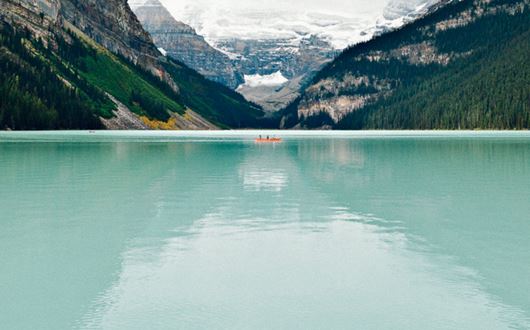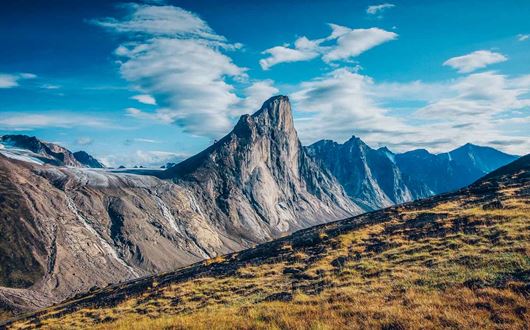THE BEST PLACES TO SEE THE NORTHERN LIGHTS IN CANADA
Aurora Viewing in Yukon
Head to the capital of Yukon known as Whitehorse and be prepared for once-in-a-lifetime Northern Lights experience. Yukon has such high success rates for the sightings of auroras that Whitehorse is considered as one of the top spots in the world for this phenomenon. Numerous Northern Lights Canada tours depart from Whitehorse daily, so you’ll have every opportunity to chase the auroras with trained professionals.
Getting there: While going to Whitehorse by car in the dead of winter would make for a road trip to remember, it might not be the wisest choice. Avalanches, closed roads and similar challenges can not only end your trip and disappoint everyone involved, but also get dangerous. The good news is that you can fly there very easily! There are quite a few options, but we advise booking a flight from Vancouver - you’ll land in Whitehorse in just 2 hours.
Northern Lights in Alberta
Although Alberta might be farther south, there are still great chances of spotting Auroras. If you’re planning a trip to Alberta and want to catch the Northern Lights while there, remember you have to aim for late night hours in winter months. And it goes without saying, no city lights!
There are several noteworthy locations that should be on your radar. Fort McMurray gets great sightings throughout the year. Athabasca is a community far up north in Alberta also worth considering. Just the fact that they have a research center which studies the phenomenon of Aurora Borealis shows how serious this place is about the Northern Lights.
Getting there: You can travel to both of these locations by car very easily (or take a flight if you prefer).
Auroras in the Northwest Territories
Yellowknife, the capital city of the Northwest Territories, is one of the most sought-after destinations for aurora hunts in North America. The geography and terrain is generous to those seeking the Northern Lights experience: the landscape is flat, meaning very little clouds and unobstructed vision. On top of that, it’s lucky enough to lie in the Auroral Zone, which means it has a high likelihood of sightings.
Getting there: If you’re traveling to Yellowknife, you’ll most likely be coming from the south. For reference, a drive from Edmonton to Yellowknife takes around 18 hours. True, you’ll probably get to see an occasional bear and a lot of unspoilt nature, but the conditions can get challenging and even dangerous during the winter. Luckily, you have flying as an alternative. Choose a flight from Edmonton, Calgary or Ottawa, and you’ll be in Yellowknife in no time.
Watching the Northern Lights in Manitoba
Located underneath the Auroral Oval, Churchill is among the top destinations in Manitoba for the Northern Lights hunts. The natural spectacle there is extremely impressive because when visible, the auroras are very strong and meander through the sky in all their glory. The rocky and flat coast of Churchill guarantees incredible viewing locations too, you can even do that on the beach!
Getting there: Churchill is a popular spot among aurora hunters and nature explorers, but there are no roads that can take you there. Your only two options are a train or a plane. A train ride from Winnipeg, Thompson or Gillam Manitoba will offer some incredible views, but the rides can last anywhere between 8 to 12 hours. If you’re all about efficient travel, take a plane from Winniped or Thompson and you’ll land in Churchill in two and a half hours.
THE BEST TIME TO VISIT CANADA FOR NORTHERN LIGHTS
Theoretically speaking, Auroras are visible in Canada year-round. But practically your chances to see them during the summer months are slim. The sightings of the Northern Lights come with patient and lengthy observation of dark skies, which becomes impossible when there are only a few hours of darkness every night.
Here is a breakdown of how likely you are to see the Northern Lights in Canada during specific times of the year:
Summer
In June, July, and August, you’d have to get very, very lucky to spot the Northern Lights in Canada. The sun goes down around 22.00 (10pm), but the light usually lingers long after. There is only a short gap with dark enough skies, but the solar activity usually isn’t strong enough. Bottom line, if you’re planning a trip to Canada with the hopes of seeing the Aurora, choose a different season.
Fall
September through November offers some relatively high chances for Northern Lights sightings. These months in Canada are usually dark enough and in the past exhibited high KPs (index used to measure the likelihood of auroras). The chances of precipitation vary greatly depending on the location of your choice. Travel somewhere with a relatively dry fall season, because rain clouds will certainly obstruct visibility.
Winter
December, January, and February will grant you unforgettable Northern Light shows. You have plenty of darkness to work with, the weather is clear and the solar activity is usually in full force. Find places with as little light pollution as possible, bundle up and enjoy sights beyond comparison.
Spring
While March and April are still decent periods for hunting the Northern Lights in Canada, May offers very little hope because there is simply not enough darkness. Plus, the springtime rain comes in big clouds, which will definitely deny you the Northern Lights show.
THE NORTHERN LIGHTS TOURS IN CANADA
Of course you can try and catch a glimpse of auroras in a town, but can you imagine how incredible this experience is out in the wilderness? Book a Northern Lights tour, travel to remote corners of Canadian nature, and find out for yourself. Our guides are highly skilled in reading the Northern Lights forecasts, so you can rest assured you’ll end up at locations with the highest chances for jaw-dropping sights.
Take a pick from our Northern Lights tours in Canada:

























